
By 2024, it is estimated that the oolong tea industry will be worth $410 million. This growth is largely driven by an increased interest in health and wellbeing.
As a dietician dealing with clinical nutrition, I am constantly looking for new drinks for my clients to add to a healthy and balanced diet. Since a growing number of my clients are drinking more tea than ever before, I have been guiding them towards oolong tea. Its pleasant taste and numerous health benefits make it perfect treat.
In this post, I will give you an in-depth introduction to oolong tea. Thus, you will be able to learn about what it is, how it is produced, beneficial effects, brewing style, and more! Here is everything that you need to know:
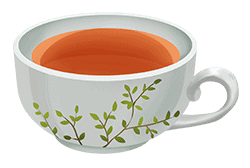
Contents
Most people are under the impression that oolong tea falls into the category of either black teas or green teas. In reality, though, it is its own category. That being said, it is still classified as a true tea as it is derived from the camellia sinensis plant, which is the same plant that green and black tea leaves come from.
Oolong tea is referred to as a partially oxidized tea. The oxidation levels can range anywhere from 8 percent to 80 percent. This is why it is often presumed that it is in between black tea and green tea leaves.
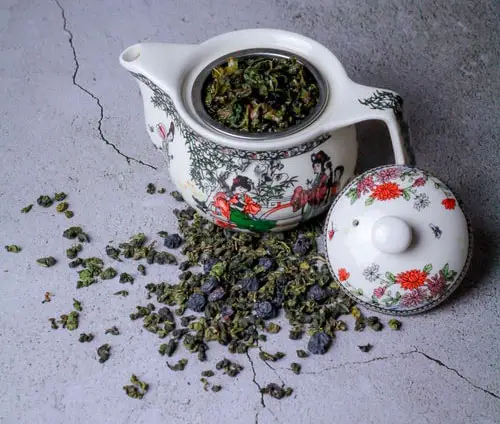
Now, let's take a closer look at how oolong tea got its start...
It is difficult to pinpoint the exact origins of the tea. Nonetheless, the tea has been grown and processed for centuries now. What is certain, though, is the birthplace of oolong - Fujian, the Southerneastern coastal province of China.
Oolong was discovered by accident. Back then, the tea makers were Buddhist monks who processed tea out of their temples. They created a way to dry the tea by slowly roasting it with charcoal. This, in combination with unexpected oxidization is what led to oolong tea as we know it.
Today, much of the oolong tea in the market is grown in the Wuyi mountains and Taiwan. Still, you will find a significant quantity being grown in places like Guangdong province as well.
Oolong tea is one of the more complex teas to grow and produce. And, this isn't just because of the oxidation levels, either. The manner in which the tea is grown as well is a bit different.
To begin with, oolong is harvested long after white, yellow, and green tea, even though it is from the same plant. Once the oolong tea plant is ready, three or four fresh leaves will be plucked. Some teas from Taiwan may contain buds as well, but it is rare.
Now, it should be noted that the exact processing methods can vary from one region to the next. For the most part, though, the overall process does include some basic steps. The production style of oolong is somewhere between green tea and black tea, particularly when it comes to the oxidation stage.
After the tea leaves have been picked, they will undergo withering. They are left in the sun for a few hours until a certain level of moisture has left the leaves. Then, the oxidation process begins. The leaves are left on bamboo trays to oxidize in a room where the temperature is carefully controlled.
As mentioned, each batch will be oxidized can be partially fermented to varying degrees. Thus, the exact time of this step can vary quite a bit. Once the tea leaves oxidize to the desired amount - less than fully fermented teas like black tea - they are exposed to very high heat. This disrupts the enzymes responsible for the oolong being oxidized, bringing the chemical reaction to an end.
When the leaves have been oxidized to perfection, the makers will move onto the shaping stage of the tea processing production. With some types, the leaves will be rolled into ball form. Then, the leaves are roasted - traditionally over charcoal - until they have become suitably dry.
The lighter oolong teas will resemble green tea, while the dark oolongs will appear closer to that of black tea. You should be aware that actual flavors and aromas will differ, however.
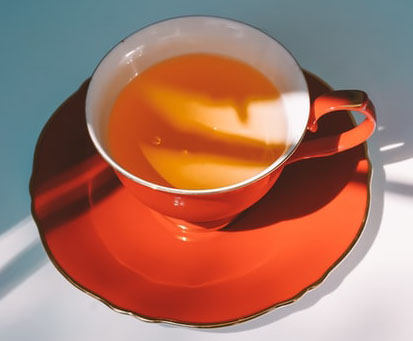
The identification of oolongs is usually based on the growing region. As such, oolong teas can be categorized as such:
You will find that most of the oolong teas that come out of this part of Fujian are referred to as Da Hong Pao - Big Red Robe. In reality, there is some variation among the oolong teas grown here. Thus, you can find Daffodil, Cinnamon, Water Golden Turtle, etc. However, there are fairly similar and are more or less treated as the same type.
The most famous of oolong teas grown in this area is the Tie Guan Yin which is also known as the Iron Goddess of Mercy. These tea leaves derive their name from the harshness and heft of the leaves. They are characterized by lightly rolled leaves.
This province produces just one kind of oolong - Lonely Bushes from the Mountain of Phoenix. The tea has been produced in the area for centuries and it is well-known for its complex aromas and flavors.
The oolong tea leaves grown here are often mistaken for green tea. This is due to the light color that they produce when they are brewed. However, the light and delicious flavor is quite different.
It can be difficult to narrow down what most oolong teas taste like. This is because the flavor can depend on a number of factors. These include where and how the tea is grown, when it is harvested, how long the oxidation process is, the level of roasting, general processing elements, etc.
The lighter oolongs can be a bit like drinking green tea. For instance, there is that light and grassy flavor. However, since these teas undergo a bit more oxidation, the tea tastes more floral, with a hint of a buttery undertone.
Teas with medium oxidation aren't quite as sweet. Instead, the flavors tend towards a warmer tone - almost woodsy. Don't be surprised if you discover notes of honey, sesame, and nuttiness among these flavors.
The more heavily oxidized teas can look like black tea. However, you shouldn't expect the malty black tea flavor to immerge, though. Instead, the robust aroma and flavor matches coffee in its intensity. At the same time, there is still a homage to green tea in every sip.
The thing about oolongs is that it can be difficult to make a comparison to other teas. Yes, there are hints of green tea and tendencies of black. In the end, though, the taste is quite uncommon and unlike anything that you have tasted before.
As oolong tea comes from camellia sinensis, it does contain caffeine. The exact amount can vary by the type of oolong as well as the brand. On average, though, the caffeine content is around 50 - 75mg per cup. This means that it contains less caffeine than black tea but more than green tea.
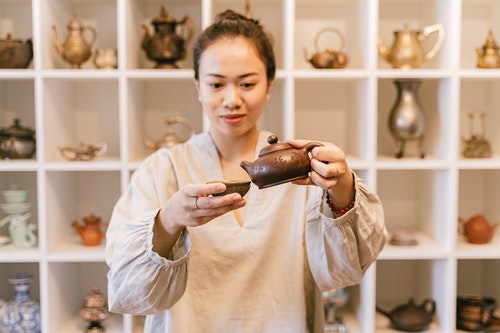
As more research has been conducted on this partially oxidized tea, it has been shown to have numerous beneficial effects. Be aware that this post doesn't provide medical advice. As such, you should always speak to a doctor about any questions you may have.
Here are top health benefits to be aware of:
As you are well aware, cardiovascular diseases are one of the major causes of death in the Western world. Fortunately, it appears that oolong tea may be able to offer protection against heart disease.
In one evidence based study, people who drank up to six cups of oolong tea were 61 percent likely to develop heart disease. This was largely due to the polyphenols - antioxidants - in the leaves.
Furthermore, individuals who drank up to 600ml of oolong tea had a 46 percent lower chance of being diagnosed with high blood pressure. For those who drank more than 600 ml, there was a reduced risk of 65 percent.
Another study found that obese subjects who drank oolong tea regularly could also be at lower risk for high cholesterol levels. In addition to this, the research also showed:
It should be noted that when you first begin regular tea consumption that you are at increased risk to experience high blood pressure readings. After your body adjusts to this habit, though, it will go back to normal.
Diabetes is another troubling condition that is on the rise. Once again, though, there may be some hope with oolong tea. Now, in general, tea has been shown to decrease the chances of non diabetic adults developing type 2 diabetes.
It was only in a more recent study that experts looked at the impact of oolong tea specifically. The systematic review discovered that drinking oolong tea on a daily basis would lower the risk of type 2 diabetes.
There was also research conducted on its effect on blood sugar - oolong tea consumption helped to reduce blood sugar levels across the board. Thus, it can help to improve glucose metabolism.
Bone loss in post menopausal women is a major concern. This is why it is quite so encouraging to discover that drinking oolong tea may result in a lower risk of this condition. If women drink oolong tea on a regular basis before menopause, the antioxidants in the tea such as catechins and flavonoids may be able to ward off bone loss.
At the same time, oolong tea contains fluoride. This can result in a stronger tooth enamel, which in turn may hold up better to various oral health issues as well as daily wear and tear.
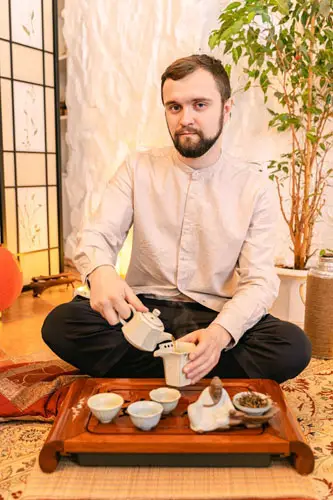
One of the main issues with getting older is that your brain function is often compromised. This can lead to poorer mental performance and a loss of concentration. It would appear, though, oolong tea may help you to overcome these effects of aging.
One study showed that there were protective effects with oolong tea resulting in lower level of cognitive impairment for individuals with daily consumption. As such, they were less likely to suffer from cognitive decline compared to their aging companions who didn't drink the tea.
In general, though, tea can help with improving levels of concentration and attention. This is due to the caffeine. However, a systematic review found that the theanine in the tea could help to deal with the symptoms associated with anxiety.
One of the top reasons that there is so much interest in oolong tea, though, is that there is a great deal of evidence that it can help with weight loss strategies.
In particular, oolong tea helps people to lose subcutaneous fat. This is quite important because this fat isn't just linked to weight gain but it can have an overall negative impact on your health. Thus, being able to get rid of this can be a good thing all around.
Individuals who took part in the study also noticed that their waistlines had gotten smaller as well. This proves that you can you can counteract diet induced overweight characteristsics with this tea.
If you are working out, oolong tea can help to make your workouts more effective as well by increasing your energy expenditure. In turn, this allows you to burn more calories and lose weight more quickly. Interestingly enough, these results were recorded even when the participants didn't engage in a lower calorie diet.
To make things even better, there is evidence that oolong tea can reduce how much fat is absorbed from meals. The tea acts as an inhibitor the pancreatic lipase enzyme. This prevents fats from being broken down and absorbed by the body. In turn, this cuts down on how much fat your body absorbs as well.
Over the years, it has been found that tea is linked to lower cancer risk. Despite this, most researchers are hesitant to draw too many direct conclusions as there is still more work to be done. It should also be noted that many of the studies have been done with black and green tea.
However, there was one study that showed that the polyphenols and antioxidants in oolong tea extracts could prevent mutations that could increase your cancer risk. There was also some evidence that the polyphenols in tea.
It should be noted that most of the studies focused on cancers such as oral, lung, esophageal, liver, colorectal, and pancreatic cancer. Due to this, there is not much evidence to support its role in lowering ovarian cancer risk in women or other types of cancers like breast and bladder cancer.
Now, let's take a look at some of the top tips that you can follow when choosing tea:
An increasing number of countries in Asia have begun to grow oolongs. While there is certainly nothing wrong with this, it is generally best to opt for the more traditional options. Thus, look fr teas that have been grown in China and Taiwan, where there is a solid oolong tea culture.
It is a good idea to pay attention to the size and shape of the balls of tea. This is because the best teas have undergone hand rolling, affording them better flavors. In addition to hand rolling, leaves that are of similar size, shape, and color, also point to uniform growing, bruising, and withering trends.
Even before the oolong is brewed, you should be able to note fresh and complex aromas such as floral or nutty. This will be intensified once the leaves have been steeped in water for some time. Nevertheless, steer clear of teas that boast an overpowering aroma as this can be a tell-tale sign that the flavor of the tea has been artificially enhanced.
Storing the tea the right way can help to maintain its flavor as well as the health benefits associated with the brew.
The first thing that you should do is to keep the tea in an airtight container. This will ensure that no other ingredients can impose on the flavor of the oolong. The container should be opaque as sunlight can cause the leaves to deteriorate. Of course, it is best to store the tea in your pantry away from direct sunlight.
Even then, you should be aware that tea does have a shelf-life. Thus, you may want to buy smaller quantities if you aren't used to drinking tea on a regular basis.
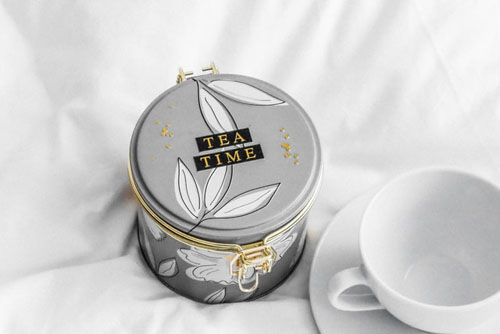
Brewing oolong tea is quite simple. There are just three things to be aware of:
I would advise you to brew individual cups of oolong tea until you get the proces rght.
Use 6 grams of tea per 8 ounces of water. Or, you can use one bag of tea per 8 ounces. If you prefer a stronger cup, then 6 ounces of water may do as well.
You should brew oolong water that has been heated to just short of boiling. Add the tea leaves to a cup and pour in the water - you can use an infuser if you wish or strain the leaves out later. Let the tea steep for up to 45 seconds before straining out the tea leaves. Don't throw them out as you can use them to brew another batch of weaker tea.
When drinking oolong tea, it is best to enjoy it plain. Certainly don't add milk or sugar to the brewed tea as it can overwhelm the natural flavors of the tea. If you want to brighten up the cup, you can add a splash of lemon.
What You Should Know - Can I Drink Oolong Tea Daily?
Despite the nutrition and benefits of oolong tea, there are some side effects that you should be aware of. Now, some of this does have to do with your caffeine intake associated with oolong tea consumption.
Too much caffeine can cause irregular heartbeat, anxiety, and insomnia if you aren't careful. Thus, it is important to monitor your intake and stay within the limits. This means drinking no more than 6 cups a day. Of course, some people are a bit more sensitive to caffeine so you may need to lower your intake.
This is all that you need to know about oolong tea. All that is left for you to do is to enjoy this delicious beverage and the perks that come along with it.
If you enjoyed this post, make sure to check out our Pinterest page where we have more information on all types of teas.
